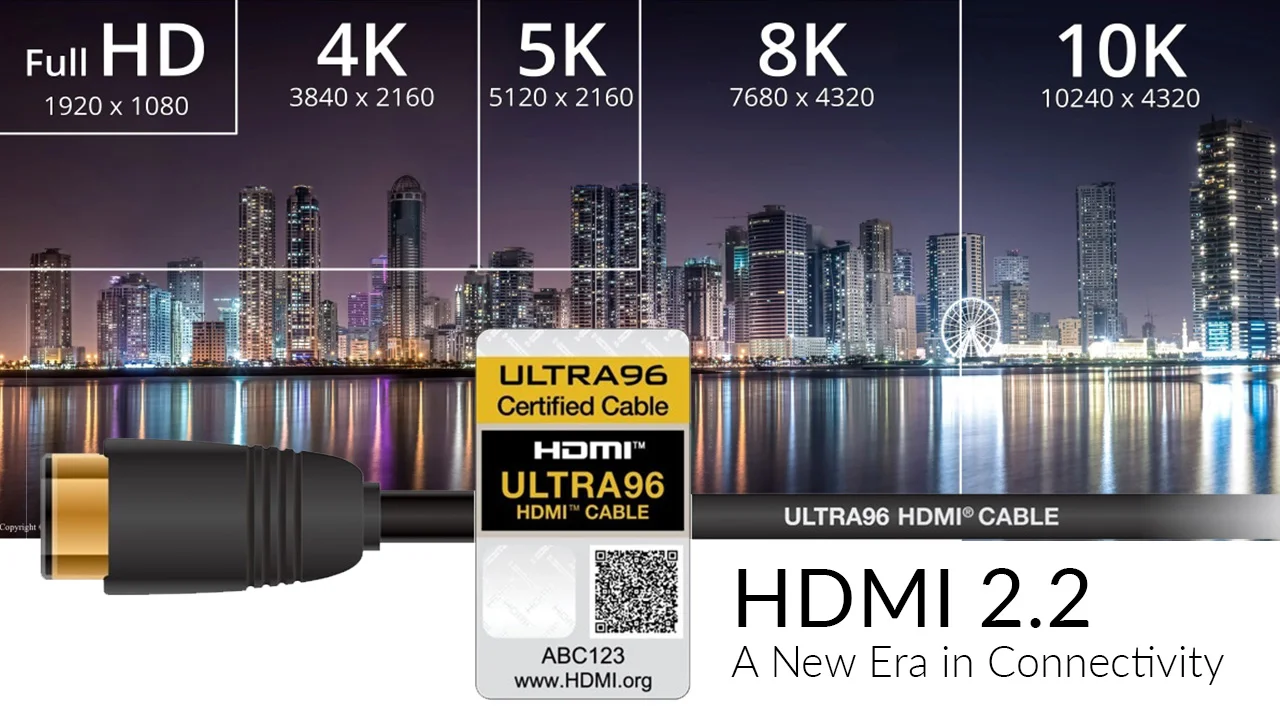
HDMI connections are found on a huge range of video displays and sources. Over 14 billion devices utilize HDMI. While the HDMI 2.1 standard exceeds the capabilities of most video displays and sources, at CES 2025, the HDMI Group announced HDMI 2.2. According to the HDMI group, this new specification promises to enhance the capabilities and performance of countless products across various industries.
This new HDMI standard promises to revolutionize how we experience video content, but the question remains: do you need it? To understand this, let's first look at the capabilities of the current standard, HDMI 2.1.
Current HDMI 2.1 standard can support 4K at 120 frames per second and up to 8K at 60 frames per second uncompressed. With the use of lossless compression, HDMI 2.1 can already handle 8K@120fps and 10K@60fps. These specifications are impressive, but HDMI 2.2 takes it a step further.
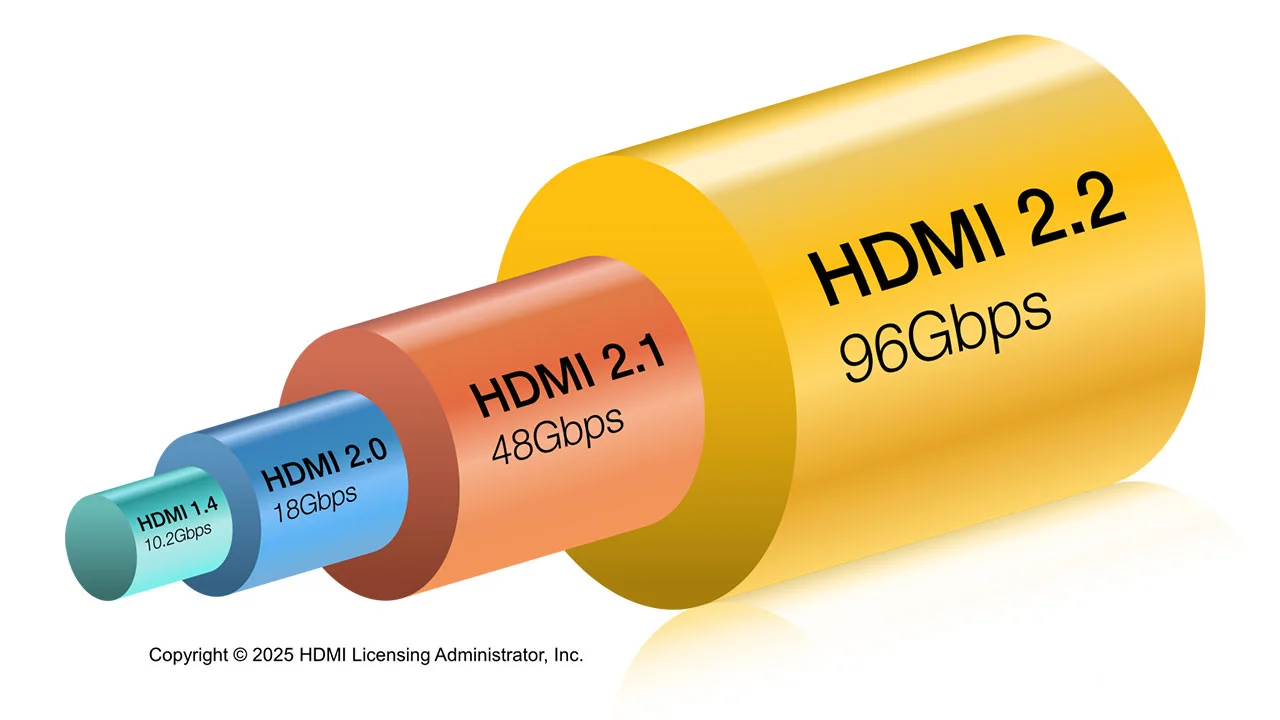
The new HDMI 2.2 standard utilizes a new Fixed Rate Link (FRL) system, which doubles the bandwidth from 48 gigabits per second, as seen in HDMI 2.1, to a staggering 96 gigabits per second. This increase in bandwidth means that HDMI 2.2 can support video formats up to 12K and frame rates exceeding 480 frames per second when viewing 4K content. While these advancements are remarkable, the question remains: is this level of performance necessary?
According to the HDMI Forum, this enhanced bandwidth is crucial for supporting content producers and consumers' ever-evolving demands. The specification supports a range of formats, from 4K to 12K, catering to the diverse needs of gaming, professional AV, and video conferencing sectors.
For movie enthusiasts, many of these numbers are largely irrelevant. Most content is produced and distributed at 4K resolution at 24 frames per second, a frame rate that provides the cinematic look desired by movie buffs. Higher frame rates do not appeal to these hardcore movie fans. Even in broadcast and television, 60 frames per second is generally more than sufficient.
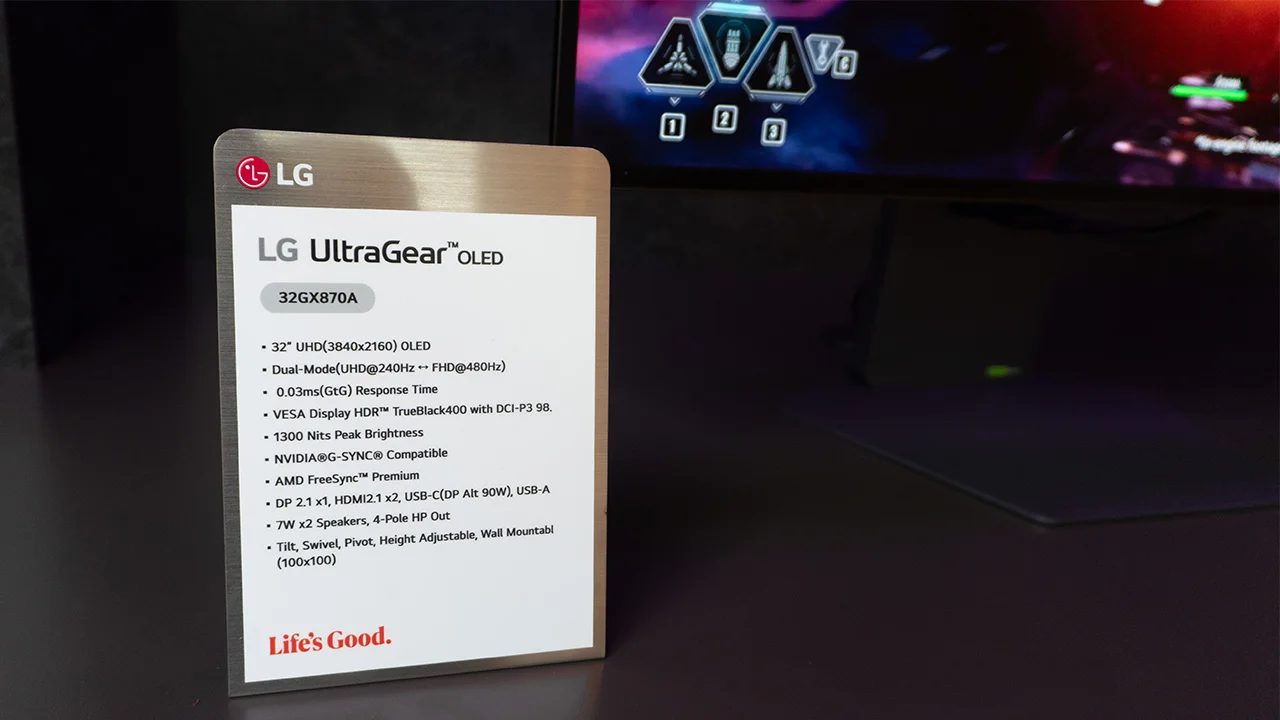
Several gaming monitors already support extremely high frame rates, so a higher bandwidth HDMI solution is needed
The only area where these higher specifications might be crucial is in gaming. At CES 2025, several display manufacturers introduced computer monitors and TVs capable of displaying HD and 4K content at extremely high frame rates. Gaming computers are becoming increasingly powerful, delivering higher resolutions at higher frame rates. While even the most powerful gaming computers may struggle to utilize the capabilities of HDMI 2.2, the new standard ensures that HDMI can match the bandwidth capabilities of other connections like DisplayPort and USB-C.
One of the standout features of HDMI 2.2 that should interest projection and home theater enthusiasts is the new Lip Sync Indication Protocol (LIP). This protocol addresses the common audio and video synchronization issue, particularly in complex AV configurations. LIP ensures a harmonious audio-visual experience by optimizing communication between devices, whether you're watching a movie or engaging in high-stakes gaming.
Ultra96 HDMI Cable
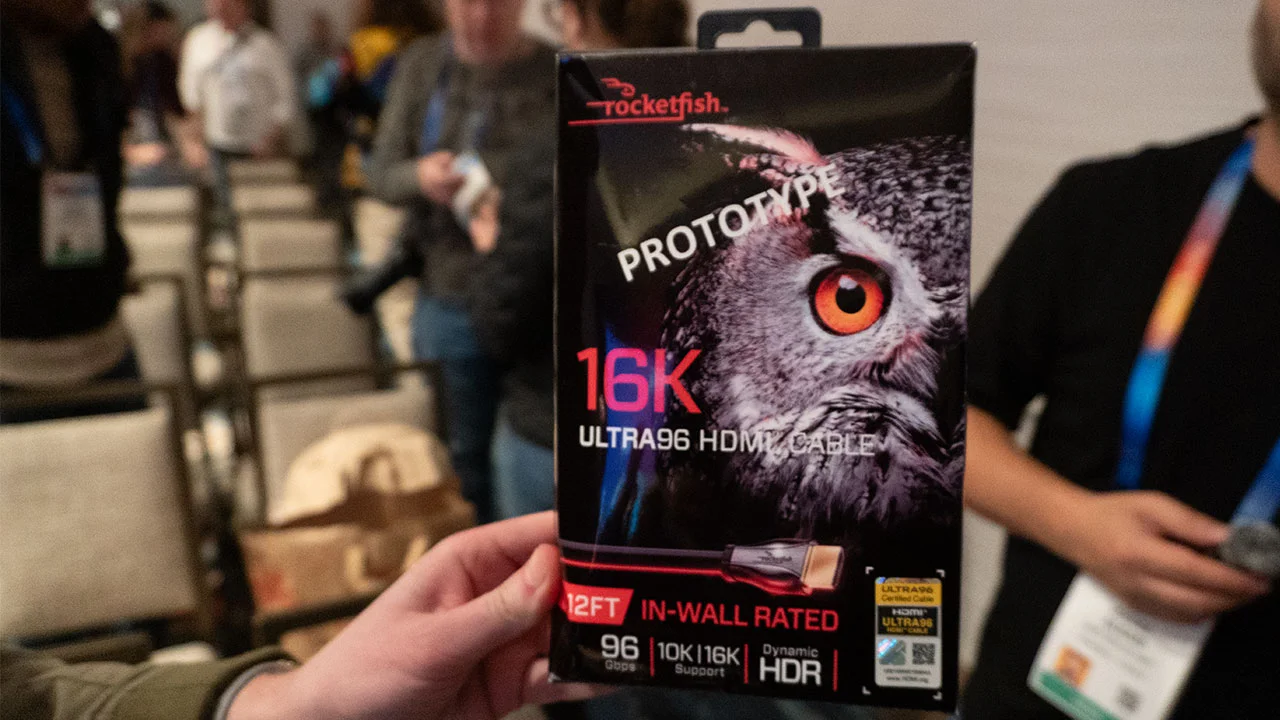
Prototype Ultra96 HDMI Cable
To support the higher bit rate of 96 Gbps, new cables are required. Accompanying the HDMI 2.2 specification is the introduction of the Ultra96 HDMI cable. This cable is designed to support all the features of HDMI 2.2 and previous specifications, ensuring seamless integration and performance.
Expected to hit the market in Q3 or Q4 of this year, the Ultra96 cable will undergo rigorous compliance and certification processes to guarantee quality and reliability. During the session at CES 2025, they showed off a prototype of an upcoming Ultra96 HDMI Cable.
We are already familiar with the challenges of dealing with long-distance HDMI connections, especially regarding projection. Most HDMI cables struggle to transfer 48Gbps unless you use expensive optical cables. Even if your Ultra96 HDMI cable could support the full bandwidth of 96Gbps, it's likely more data than any modern projector could utilize.
Compliance and Certification
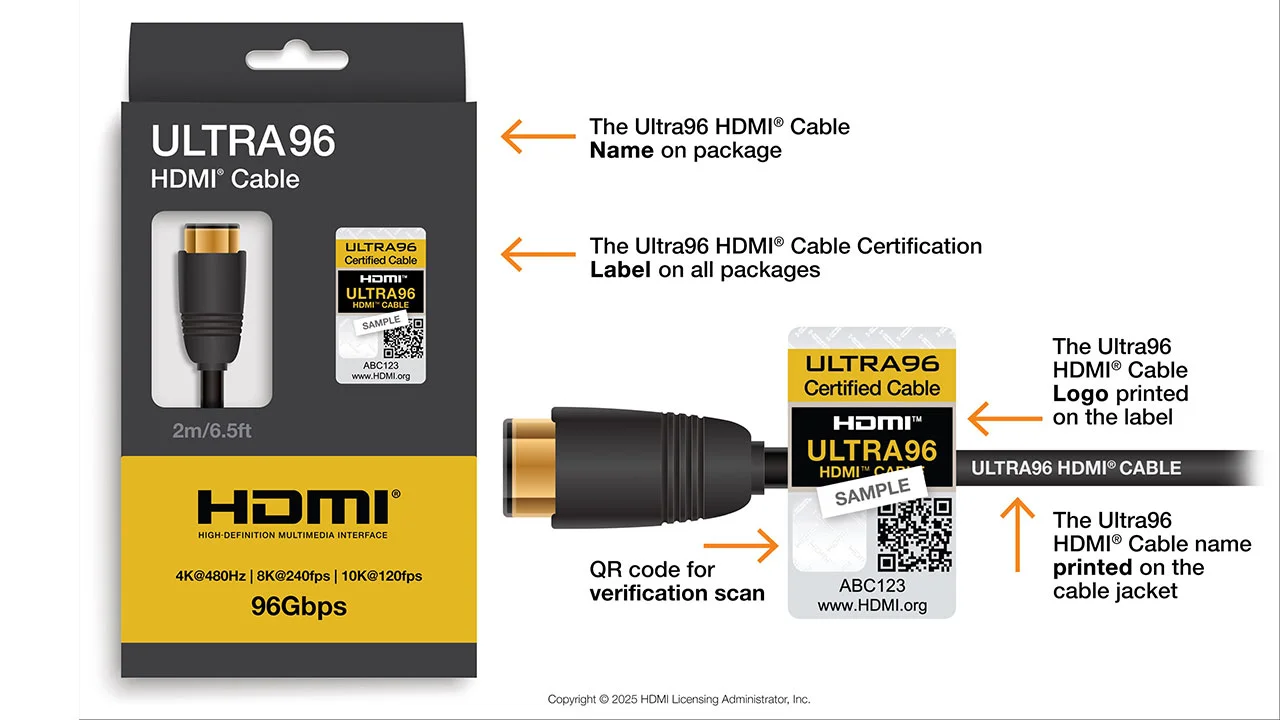
All Ultra96 HDMI Cables will be tested and certified at HDMI Forum Authorized Test Centers
The HDMI Forum has established stringent compliance and certification programs to maintain the integrity of HDMI products. Both the Ultra96 and current Ultra High-Speed HDMI cables must pass authorized test center certifications.
This ensures that cable, regardless of length, meets the highest performance and reliability standards.To minimize confusion and ensure quality, all Ultra96 HDMI Cables will display an HDMI® Certification Label on each package and on the cable jacket.
The HDMI Forum remains committed to addressing the needs of the industry. While the forum has not standardized locking mechanisms for HDMI, it acknowledges the demand for such features in certain applications. Additionally, the forum continues to explore the potential for HDMI alt modes to accommodate devices without discrete HDMI connectors.
Forward-Looking Audio/Video Connection

The HDMI 2.2 specification is designed to support extremely high resolution and frame rates
While the HDMI 2.1 standard exceeds the capabilities of most video displays and sources, at CES 2025, the HDMI Group announced HDMI 2.2. According to the HDMI group, this new specification promises to enhance the capabilities and performance of countless products across various industries.
How will HDMI 2.2 change the way we engage with video content? Most movies are still shot in 4K at 24 frames, so the higher bandwidth may not be beneficial to cinema enthusiasts for a while. However, gaming continues to be a significant driver of technological advancements in the HDMI ecosystem. With graphics engines doubling in performance every two to three years, HDMI 2.2 is poised to meet the demands of high-end gamers.
In conclusion, while HDMI 2.2 offers impressive advancements in video technology, its necessity depends mainly on your specific needs and the capabilities of your current equipment. For most consumers, especially those focused on movies and television, the current HDMI 2.1 standard is more than adequate. However, for gamers and tech enthusiasts eager to push the boundaries of what's possible, HDMI 2.2 might be the future-proof solution they are looking for.
For more information, visit the HDMI website at hdmi.org.







